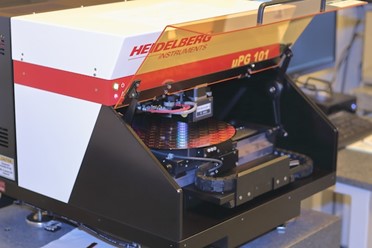What started as a name for the technological objective of manipulating atoms and molecules to create macroscale goods has turned into a field that deals with matter below a given size threshold. As it stands today, nanotechnology is a vast spectrum of applications and research that share the size characteristic.
At such a small scale, materials display properties and behaviors unlike their bulk-form cousins. Thus, Matthew Aladesaye says that this technology proves transformative for many fields, particularly mechanical engineering.
The Major Mechanical Engineering Impacts of Nanotechnology
From extending the life of car components to enhancing countless materials to increasing energy efficiency, the science boasts the ability to observe and control individual atoms for all-new improvements. Stronger, of, and overall better materials are there for engineers to take advantage of with nanotechnology.
Designing and Developing Miniature Devices
Perhaps the most obvious impact of nanotech is the miniature devices it’s brought into existence. Sensors and other necessities are constructed in tiny sizes that work just as well as their larger counterparts.
Mechanical engineers utilize these devices in a variety of systems, namely micro-electromechanical and nanoelectromechanical. They have a range of applications, with professionals utilizing their incredible properties in robotics, electronics, and even biomedical engineering.
Improving Surface Properties
As any mechanical engineer can attest, surface properties, like friction, adhesion, and wear and tear, play a vital role in the performance of mechanical systems. And nanotechnology has allowed engineers to improve these properties in various ways.
Nano-coatings are the most common application of this usage so far. Treating materials with such coatings reduce wear and friction in mechanical systems, improving their efficiency, longevity, and durability.
Creating Self-Healing Materials
Self-healing materials do what they say on the tin — they repair themselves if they are damaged. And it’s all thanks to nanotechnology that such futuristic-esque materials exist in the modern world.
Mechanical systems and their components are place under extreme stress, pressure, and other types of wear and tear. However, engineers are utilizing nanotechnology’s principles to create self-repairing, self-healing materials that increase systems’ lifespans and reduce maintenance costs.

Boosting Energy Efficiency
Mechanical structures use a huge amount of energy, leading to increased carbon emissions and ultra-high energy costs. Sustainability lies in nanotechnology, which plays a massive role in the creation and development of energy-efficient, sustainable solutions.
Nanocomposites, for instance, have produced high-strength yet lightweight materials that significantly reduce the weight of systems, reducing energy consumption as a result.
The Transformed Material World
Nanotechnology has transformed materials, bringing a new wage of composites with boosted functionality and a myriad of applications. Information gleaned through this tech on processing, applications, and characterization helps researchers comprehend and apply the chemical and material principles unique to this sector of the material world.
Even though the devices and other solutions created by the technology are revolutionary, they are yet to be fully commercialized due to their complex methods of obtaining and nature. Nevertheless, nanotech is changing the mechanical engineering field for the better.
